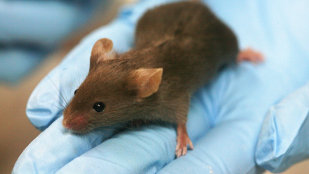Using proteomics in combination with a 19th-century surgical technique in which the circulatory systems of two mice are joined together, researchers have demonstrated that a protein found only in the blood of young mice reverses the effects of aging in old mice, according to a study published this week (May 9) in Cell.
“I think it’s a stunning result that, for the first time, points at a secreted protein that maintains the heart in a young state,” cardiologist Deepak Srivastava of the Gladstone Institute of Cardiovascular Disease in San Francisco, who was not involved with the research, told Nature. “That’s pretty remarkable.”
Heart failure in elderly people is often caused by cardiac hypertrophy, a thickening of the heart muscle that results in the shrinking of the chambers within. To understand what causes this age-related thickening, and to search for a way to reverse it, stem cell biologists from Harvard University tested the effect of circulating factors in young blood on aging hearts.
To do so, they turned to a centuries-old technique called heterochronic parabiosis, in which two live animals of different ages are surgically joined together to share blood circulation. Having surgically linked the blood supply of five 2-year-old mice with five 2-month-old mice, the researchers found that, after 4 weeks of exposure to young blood, the older mice’s heart muscles had dramatically thinned and softened.
Using protein-analysis techniques to narrow down the list of what could be responsible for this reversal, the researchers identified a molecule called growth differentiation factor 11 (GDF-11), a circulating factor in young mice that declines with age. The team then showed old mice treated with GDF-11 for 30 days experienced that same heart rejuvenation as those in the parabiosis experiment, demonstrating that the molecule—which also appears in human blood—may hold promise for treating cardiac aging.
“It’s conceivable that this is just an interesting mouse story,” Richard Lee of the Harvard Stem Cell Institute told ScienceNOW, “but we’re hoping to get data that might tell us that it pertains to humans.”







